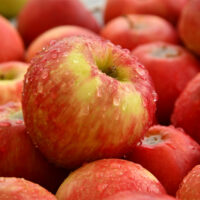5 easy ways to use a smartwatch effectively

Gone are the days when watches were used to determine the time. Smartwatches have enabled many to wear daily schedules and lifestyles on their wrists as one tread through the day. You can perform a wide range of daily activities, from counting steps to calories, through your smartwatch. Here are some smart tips to utilize them efficiently to regulate your health parameters, reduce screen time, and facilitate convenience in your day-to-day activities.
Smart features to utilize on your smartwatch
Monitor sleep quality
Inadequate sleep is linked with several health conditions, including heart and kidney diseases, diabetes, and stroke. Moreover, the quality of sleep matters just as much as the number of hours. Smartwatches are designed to record your sleep hours as well as their quality, including one’s rapid eye movement (REM), light sleep, and deep sleep times.
Check the palpitation rate
A healthy heart is the foundation for a healthy body. Smartwatches can be used to monitor one’s heart rate, maintain records, and track changes in palpitations regularly. Any discrepancies or negative trends in your heart rate can help you consult a doctor instantly and prevent potential heart diseases.
“Watch” Your Step
One of the most significant advantages of fitness watches is the feature of displaying the number of steps one has walked throughout the day. You can have your fitness watch on while performing cardio activities and other exercises like jogging or walking, or even while doing household chores to prevent a sedentary lifestyle. Many smartwatches also calculate the level of oxygen your body utilizes for various activities and measure calories burned for each.
Connect the watch to smartphones
Connecting your smartwatch to your phone is one of the most convenient ways to avoid missing out on messages, calls, and emails while you are away from your device. It also enables you to play music from your phone playlists without using it. Alarms, weather forecasts, and a remote-control camera are other features you can access on your smartwatch by connecting it to your phone.
Set silent alarms
Would you like to be woken up gently from your sleep without being disturbed by loud, gregarious sounds? The silent alarm on your smartwatch is here to your rescue! Most smartwatches have the “silent alarm” feature, which does not play a sound but gently vibrates against your wrist, waking you up to a pleasant morning.
Besides being your perfect fitness companion and guide, your smartwatch can help you stay away from your mobile device for extended periods while accessing calls, messages, emails, etc., all day along.
Today, several smartwatches are ruling the market with their splendid features and aesthetic appeal. For example, Apple smartwatches, available in three models — Apple Watch Series 7, Apple Watch SE, and Apple Watch Series 3 — are equipped with several features, including exceptionally clear displays, features to measure oxygen and heart rate, water resistance (and suitability for swimming), and a thick front crystal. You can connect the smartwatch easily to your iPhone and access its features at your fingertips.
The latest Apple Watch Series 8, launched on September 7, has taken the device to a new realm. This smartwatch is resistant to dust, water (swim-proof), and cracks and is equipped with advanced health sensors. The unique temperature-sensing feature allows users to easily track their menstrual cycles by recording their temperatures while they are asleep, enabling them to monitor their ovulation periods effectively. You can also easily share the menstrual cycle report created through your smartwatch with your healthcare professional.
Apple Watch Series 8 also introduces crash detection, one of the latest features in the Apple smartphone series. This unique feature detects if the user is in a car crash, automatically connecting them to emergency services and notifying emergency contacts. Similarly, it offers fall detection and SOS services to ensure timely help and assistance in case of medical emergencies. Blood pressure, oxygen, and ECG monitoring; determining quality and length of sleep in the REM, core, and deep-sleep stages; customized workout tracking for different activities; and navigation through Maps are just some of its other desirable features.
Before purchasing a smartwatch, review all its specifications carefully and pick the one that most effectively meets your fitness and convenience needs.





